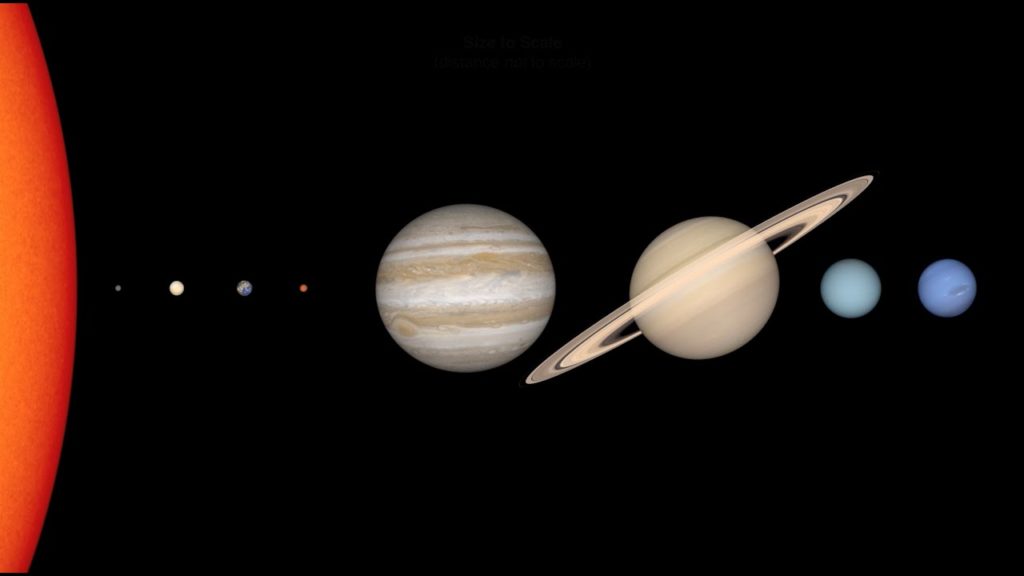[“Communicating science” series]

This post celebrates communicating the cosmos at a scale local to the nearest star, our Sun. Our solar system.
A recent Science Alert article acclaims a science communicator and his visualization of the scale of things. In this case, the scale of planets (also Ceres, Pluto, our Moon) and the Sun.
Perhaps there’ll be an immersive holographic version.
• Science Alert > “Astronomer’s Mind-Blowing Animation Shows The True Scale of Our Solar System” by David Nield (30 April 2022)
… planetary astronomer James O’Donoghue from the Japan Aerospace Exploration Agency (JAXA) [shared] a brief animation that starts off with the Ceres dwarf planet, and moves up through Solar System objects by size (including Earth), before closing by zooming out to take in the Sun.
James O’Donoghue has previous form for this too – he’s put together plenty of other videos showing the jaw-dropping scale of the Solar System, and we’re very grateful to have them.
• YouTube > Dr James O’Donoghue > “Selected solar system objects to scale in size, rotation speed and axial tilt” (posted Oct 12, 2020)

And the scale of the planets from a sighting on land. Still amazing.
• NASA > APOD > “Planets of the Solar System” (6-25-2022)
Planetary trails scale a storied sky.
• NASA > APOD > “The Solar System’s Planet Trails” (July 1, 2022) – above the Forbidden City in Beijing, China on June 24, 2022.
Image Credit & Copyright: Zheng Zhi
• NASA > APOD > (YouTube) “Planets of the Solar System: Tilts and Spins” (9-11-2022)
Screenshot Credit: NASA, Animation: James O’Donoghue (JAXA)
Protostar L1527, imaged by NIRCam
A view of a solar system even before its star achieves nuclear fusion.
• esa.int > “Webb catches fiery hourglass as new star forms” (11-16-2022)